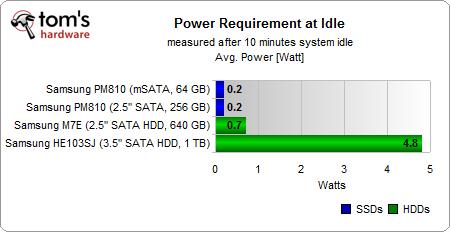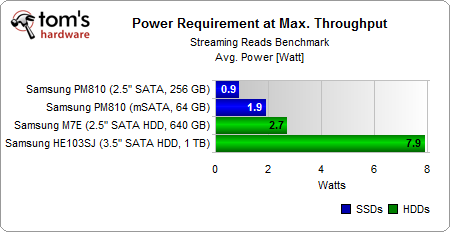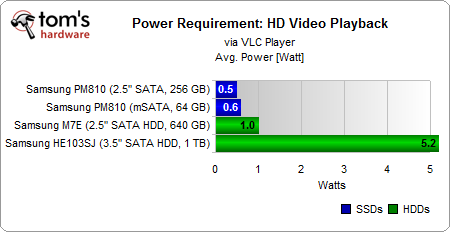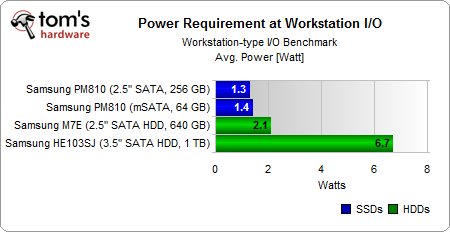Hands-On: A Second mSATA-Based SSD Emerges
When it comes to storage, the 3.5” and 2.5” form factors are most popular. But they're not always suitable for notebooks and netbooks. Samsung is the second vendor to introduce an mSATA-based SSD, after Intel demonstrated its SSD 310 earlier this year.
Benchmark Results: Power Requirements

As expected, we don't see much difference in idle power consumption between the SSDs. Going from 2.5” SATA to mSATA has power-saving potential, but given already-low figures, the margin for consumption is minimal.

We repeated these tests several times, but it indeed seems that the mSATA device actually requires more power at peak throughput than its conventional 2.5” counterpart.

The same is the case for HD video playback, although power consumption is at similar levels, and clearly below the power required by a hard drive to deliver a high-def video stream.

Power consumption during lots of I/O activity is similar on both SSDs.
Stay On the Cutting Edge: Get the Tom's Hardware Newsletter
Get Tom's Hardware's best news and in-depth reviews, straight to your inbox.
Current page: Benchmark Results: Power Requirements
Prev Page Benchmark Results: PCMark Vantage Next Page Summary: Cost, Cost/GB, And Performance